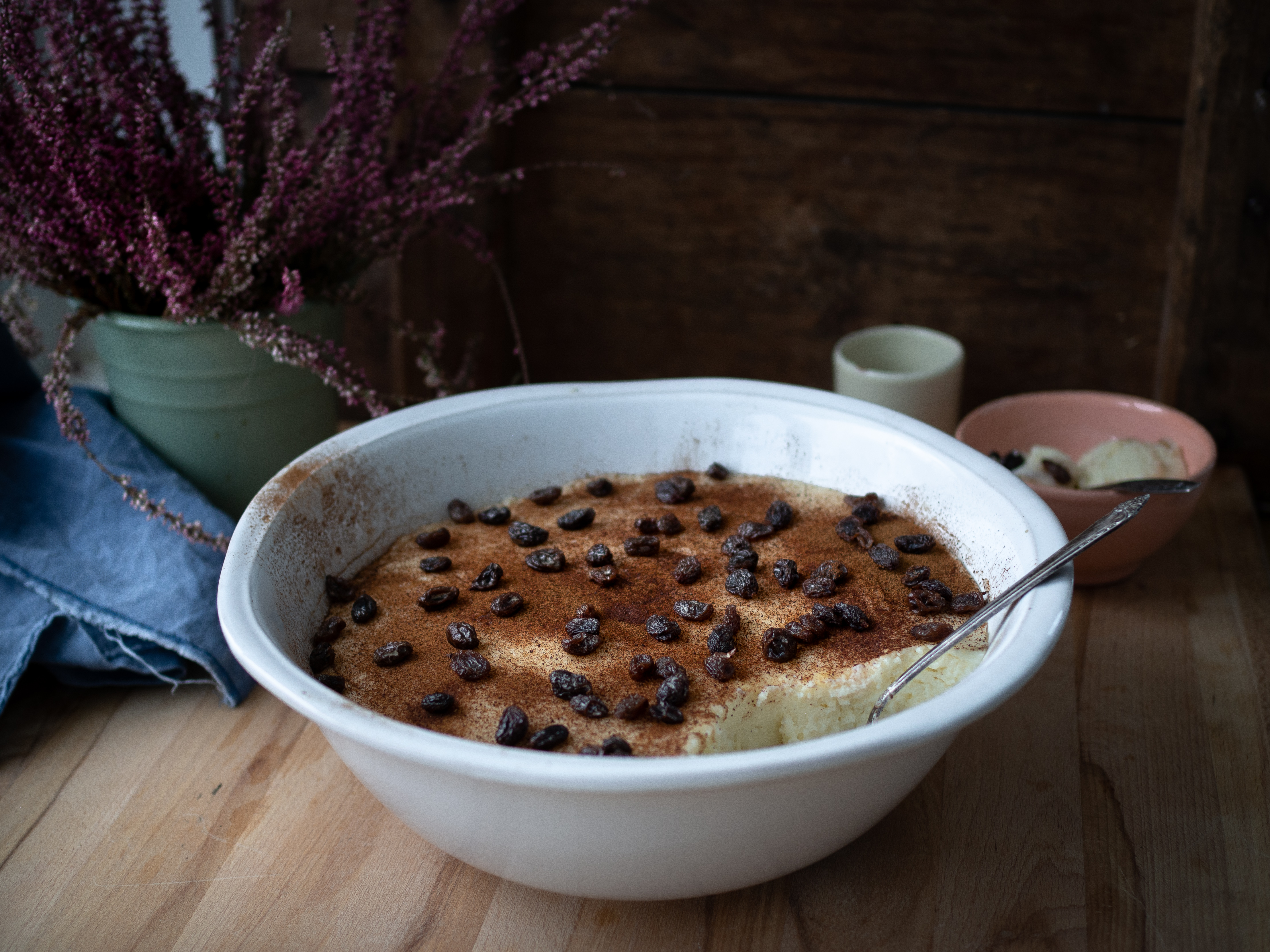

Not long after we moved to Norway, I was served kaffegraut “coffee porridge” at the Rollag Station Kafe in Rollag. It was presented simple enough. A bowl with a thin layer of cinnamon and symmetrically placed raisins on top. What lied beneath the brown layer, though, was unknown to me. I was curious, perhaps even a little skeptical being that it was porridge and all. But one bite in and my slightly tensed shoulders relaxed. My eyes widened as my thoughts began to process what I had just encountered, and I couldn’t help but smile as I took in the smooth textures and subtle buttery and sweet flavors.
After devouring my bowl, I had to find out what this impossibly good porridge was and if the cook would be kind enough to share her recipe. She explained it was kaffegraut, a sweet semolina porridge typically served alongside coffee as a treat. The recipe she was using was from one of Norway’s most traditional homecooks, Bodil Nordjore. The secret: cook it for a long time. A really long time.



This dish really plays on the whole ‘time and patience will create something magical´ method. The idea and the science behind it is that as the semolina cooks longer, it breaks down so that the porridge almost melts in your mouth. The longer the milk cooks, the more the flavor from the whey intensifies.
According to Bodil, kaffegraut is a traditional festive dish that is found more so in the western part of Norway – each location having their own name for it, such as veitlagraut. It was used in place of serving bløtkake (layered cream cake) during celebrations such as weddings, confirmations and baptisms. This was because it was much more practical to carry the porridge than a cake, in the sense that a cake might not retain its shape after a long journey – and I think we have all experienced when a cake comes out of the box not looking quite the way it was intended to. That’s what makes this porridge so unique, it doesn’t look or sound like much, but it can easily be a substitute for one of Norway’s most beloved cakes.

This sweet porridge is smooth and creamy and just melts in your mouth. A treat to go alongside your coffee or drink of choice. While some recipes recommend a cooking time of three hours, I found two hours was quite sufficient. If you are short on time, by all means you can cook it for an hour, but I recommend no less to ensure you get enough time to break down the semolina and intensify the flavor. If you are good for time, then go for three hours.
I like to soak my raisins in coffee to plump them up before serving and give them a little more flavor. You can do this with hot water if you don’t wish to use coffee, or you can just use raisins straight from the container.
Kaffegraut (Norwegian Semolina Porridge)
Serves a party (around 10-12)
- 8 ½ cups (2 liters) whole milk
- 1 cup (240 ml) heavy cream
- 1 cup plus 2 ½ tablespoons (200 g) semolina
- 1 teaspoon salt
- 1 cup (200 g) granulated sugar
- ¾ cup (170 g) cold butter, cut in pieces
To serve:
- ¼ cup (60 ml) raisins
- 1 shot espresso (optional)
- Cinnamon
In a large, heavy-bottomed pot, warm up the milk and heavy cream just before the mixture begins to boil. Whisk in the semolina and salt, ensuring no clumps are forming. Reduce the heat to low and gently simmer for 2 to 3 hours, stirring often to ensure the porridge doesn’t brown on the bottom (it’s ok to carry on doing other things while the porridge is cooking, just be sure to check it often enough).
Remove the porridge from the stove. Add the sugar and stir until it melts into the porridge. Follow with the butter and stir well. The porridge should be glossy now and slide around the pot as you stir. Pour the porridge in a large serving bowl. When cooled down some, place the bowl in the refrigerator (covered with plastic wrap) for at least an hour to chill.
Optional: Soak the raisins in a shot of hot espresso or strong coffee to soften them for about 30 minutes before serving.
When ready to serve, sprinkle on a good layer of cinnamon and place the raisins (soaked in coffee or not) on top. Enjoy!
S

Leave a Reply